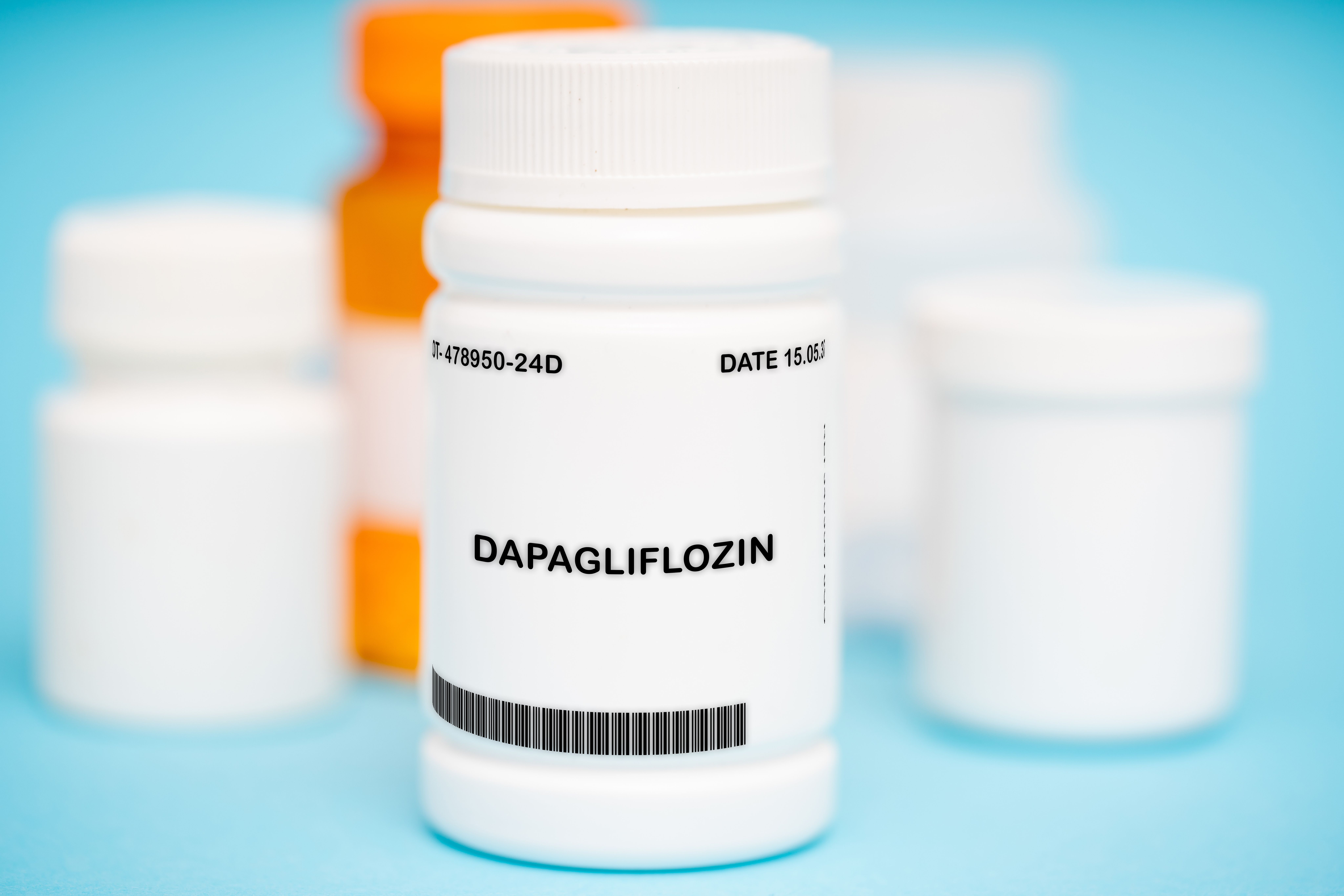- Center on Health Equity & Access
- Clinical
- Health Care Cost
- Health Care Delivery
- Insurance
- Policy
- Technology
- Value-Based Care
Study: SGLT2is Should Be Continued Despite Initial eGFR Decline in Patients With HFmrEF/HFpEF
Despite an initial drop in estimated glomerular filtration rate (eGFR) after 1 month of dapagliflozin, researchers say this is not associated with subsequent risk of cardiovascular or kidney events for patients with heart failure with mildly reduced ejection fraction (HFmrEF) or preserved ejection fraction (HFpEF).
Among patients with heart failure with mildly reduced ejection fraction (HFmrEF) or preserved ejection fraction (HFpEF) treated with dapagliflozin, an initial estimated glomerular filtration rate (eGFR) decline was frequent, but was not associated with subsequent risk of cardiovascular or kidney events.
These findings are based on a prespecified secondary analysis of the Dapagliflozin Evaluation to Improve the Lives of Patients With Preserved Ejection Fraction Heart Failure (DELIVER) randomized clinical trial and were published in JAMA Cardiology. According to the authors, the findings from this study support clinical advice that an initial decline in eGFR should not prompt the interruption or discontinuation of sodium-glucose cotransporter-2 inhibitors (SGLT2is).
dapagliflozin | Image credit: luchschenF – stock.adobe.com

A decrease in eGFR is anticipated after initiating an SGLT2i, and is a pattern observed in individuals with diabetes, chronic kidney disease, and HF.
“Although this has been shown to be reversible upon SGLT2i withdrawal in some studies, concerns remain that such acute functional changes in eGFR may lead to inappropriate drug cessation, thus preventing patients from benefiting from long-term risk reduction,” the authors said.
The authors compared the occurrence of an initial eGFR decline from baseline to month 1 between dapagliflozin and placebo among 5788 participants—2892 receiving dapagliflozin and 2896 receiving placebo—with a mean (SD) age of 72 (10) years and 56% being male. Cardiovascular outcomes included cardiovascular death or HF event, and kidney outcomes included ≥ 50% eGFR decline, eGFR < 15 or dialysis, and death from kidney causes).
Between baseline and month 1, the median (IQR) change in eGFR level from baseline to month was –1 (–6 to 5) for placebo and –4 (–9 to 1) for dapagliflozin (P < .001). In that month, a greater proportion of patients who received dapagliflozin (40%) developed an initial eGFR decline greater than 10% compared with placebo (25%) (OR, 1.9; 95% CI, 1.7-2.1; P difference < .001).
In the placebo group, a higher risk of the primary cardiovascular outcome was linked to an initial eGFR decline exceeding 10% vs ≤ 10% (aHR, 1.33; 95% CI, 1.10-1.62). However, this association was not observed in those randomized to dapagliflozin (adjusted HR [aHR], 0.90; 95% CI, 0.74-1.09; P for interaction = .01). Similar associations were noted with alternative thresholds of initial eGFR decline and when analyzed as a continuous measure. Importantly, an initial eGFR decline of greater than 10% was not associated with adverse subsequent kidney composite outcomes in patients treated with dapagliflozin (aHR, 0.94; 95% CI, 0.49-1.82).
Additionally, in adjusted analyses. the utilization of SGLT2is was linked to a reduced risk of cardiovascular and kidney outcomes in individuals with a higher likelihood of an eGFR decline exceeding 10% or 30%. Employing inverse probability-weighted models, the persistent use of SGLT2is beyond 6 months was associated with a decreased risk of cardiovascular and kidney outcomes across various categories of initial eGFR decline compared with SGLT2i discontinuation.
The authors also noted that, while adverse effects occurred more among patients who had an initial eGFR decline compared with those who did not, most effects were similar between the dapagliflozin and placebo groups.
The study's strengths include the large number of patients with repeated creatinine measurements, inclusion of individuals with a lower eGFR threshold of 25, and meticulous follow-up for adjudicated outcomes. However, limitations include the loss of some patients without repeated kidney function measurements, potential generalization challenges beyond a predominantly Asian and White population, potential residual confounding from considering a postrandomization exposure, and the relatively infrequent occurrence of post hoc defined kidney composite outcomes.
“These data will be informative to clinicians and patients and, with appropriate monitoring, should provide reassurance for continuation of these medications in the majority of patients,” the authors concluded.
Reference
McCausland FR, Claggett BL, Vaduganathan M, et al. Decline in estimated glomerular filtration rate after dapagliflozin in heart failure with mildly reduced or preserved ejection fraction: a prespecified secondary analysis of the DELIVER randomized clinical trial. JAMA Cardiol. Published online November 12, 2023. doi:10.1001/jamacardio.2023.4664
Health Outcomes of Dually Eligible Beneficiaries Under Different Medicare Payment Arrangements
December 1st 2025Within the same physician groups, 2-sided risk in Medicare Advantage (MA) was associated with higher quality and lower utilization for dually eligible beneficiaries compared with fee-for-service MA and traditional Medicare.
Read More
